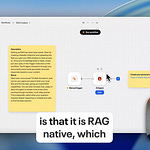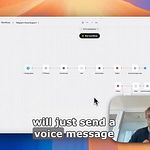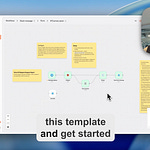You’re in terminal, Claude is helping you ship, the code is flowing. You’re three commits deep and feeling productive.
Then you deploy and realize the authentication flow you implemented was deprecated two months ago.
Or you’re using an endpoint that got updated last week and now requires different parameters.
Or you’re following a pattern that the docs explicitly say not to use anymore.
Your code works. Tests pass. Everything seems fine. Until it isn’t.
This is the hidden cost of vibe coding: you’re building on stale context.
The Stale Context Problem
When you ask Claude how to implement something, it’s answering from training data. That data is months old. The APIs you’re using have changed. The docs have evolved. Best practices have shifted.
But Claude doesn’t know that yet.
So you write code that looks right, ships, and creates technical debt you can’t see. Not because you’re being careless. Because your AI assistant is working with outdated information.
The Anthropic API changed their rate limiting approach. Stripe updated their webhook verification. Your internal API added new required fields. Claude has no idea.
And neither do you, until you’re debugging something that shouldn’t be broken.
What We Built
We needed Claude to search live documentation before answering. Not training data from six months ago. Actual current docs.
So we built Needle MCP for Claude Code.
The idea is simple: connect Claude to your documentation collections. When it answers questions, it searches your live docs first, then responds based on what’s actually current.
Here’s how it works.
Step 1: Index Your Knowledge Base
Create collections in Needle with the docs you actually use. The Anthropic API docs. Stripe. Your internal API documentation. Your engineering runbooks. Whatever you’re building with.
We have auto-sync connectors for common sources (Anthropic, Stripe, tons of others). They keep your collections current automatically. No manual updates.
Step 2: Connect Claude Code to Needle MCP
MCP is Model Context Protocol. It’s the bridge between Claude and external data sources.
One command connects Claude Code to your Needle collections:
claude mcp add --transport http needle \
https://mcp.needle.app/mcp \
--header “Authorization:Bearer YOUR_KEY”That’s it. Claude can now search all your collections automatically.
Step 3: Create Skills (Optional But Powerful)
You can create a SKILL.md file that tells Claude when and how to search your collections.
For example:
# Skill: Search Needle Docs
## When to use
- When asked about internal APIs or runbooks
- When context is missing from current chat
## How to use
1. Search these collections first:
- engineering-docs
- product-specs
- runbooks
2. Include citations with titles and URLsNow Claude knows to check your docs before answering. It becomes context-aware by default.
What Actually Changes
Before:
“How do I authenticate with the Anthropic API?”
Claude answers from training data (maybe outdated)
You implement it
You discover later the auth flow changed
After:
“How do I authenticate with the Anthropic API?”
Claude searches your live Anthropic docs collection
Answers based on current documentation
You implement it correctly the first time
No more “let me check the docs real quick” context switching. No more discovering your code is built on outdated assumptions. No more phantom bugs from stale information.
The Flow State Difference
Here’s what this looks like in practice.
You’re building a Stripe integration. You ask Claude about webhook verification. Instead of answering from memory, Claude searches your Stripe docs collection (which auto-synced this morning) and gives you the current implementation.
You ask about rate limiting in your internal API. Claude searches your engineering docs and finds the exact policy, including the runbook for handling rate limit errors.
You stay in terminal. Stay in flow. But now the answers are grounded in live documentation, not training data from months ago.
From Vibe Coding to Context-Aware Coding
Vibe coding isn’t bad. The feeling of being in flow with an AI assistant is real and it’s powerful.
The problem is when that flow is built on stale context. When you’re shipping fast but accumulating invisible technical debt.
Context-aware coding keeps the flow. Keeps the speed. But grounds it in current information.
Claude still feels like your coding partner. It just became a coding partner who actually knows what’s in your docs right now, not what was in its training data six months ago.
Try It
Setup takes about 5 minutes. No credit card required. Free tier available.
Start here: needle.app
Create your documentation collections
Connect Claude Code to Needle MCP
Start coding like normal
The first time Claude searches your live docs and gives you a current answer instead of guessing, you’ll feel the difference.
We built this because we needed it. Turns out everyone vibe coding with AI assistants needs it.
Let me know if you try it. I want to hear what documentation sources people are connecting and how it changes their workflow.











